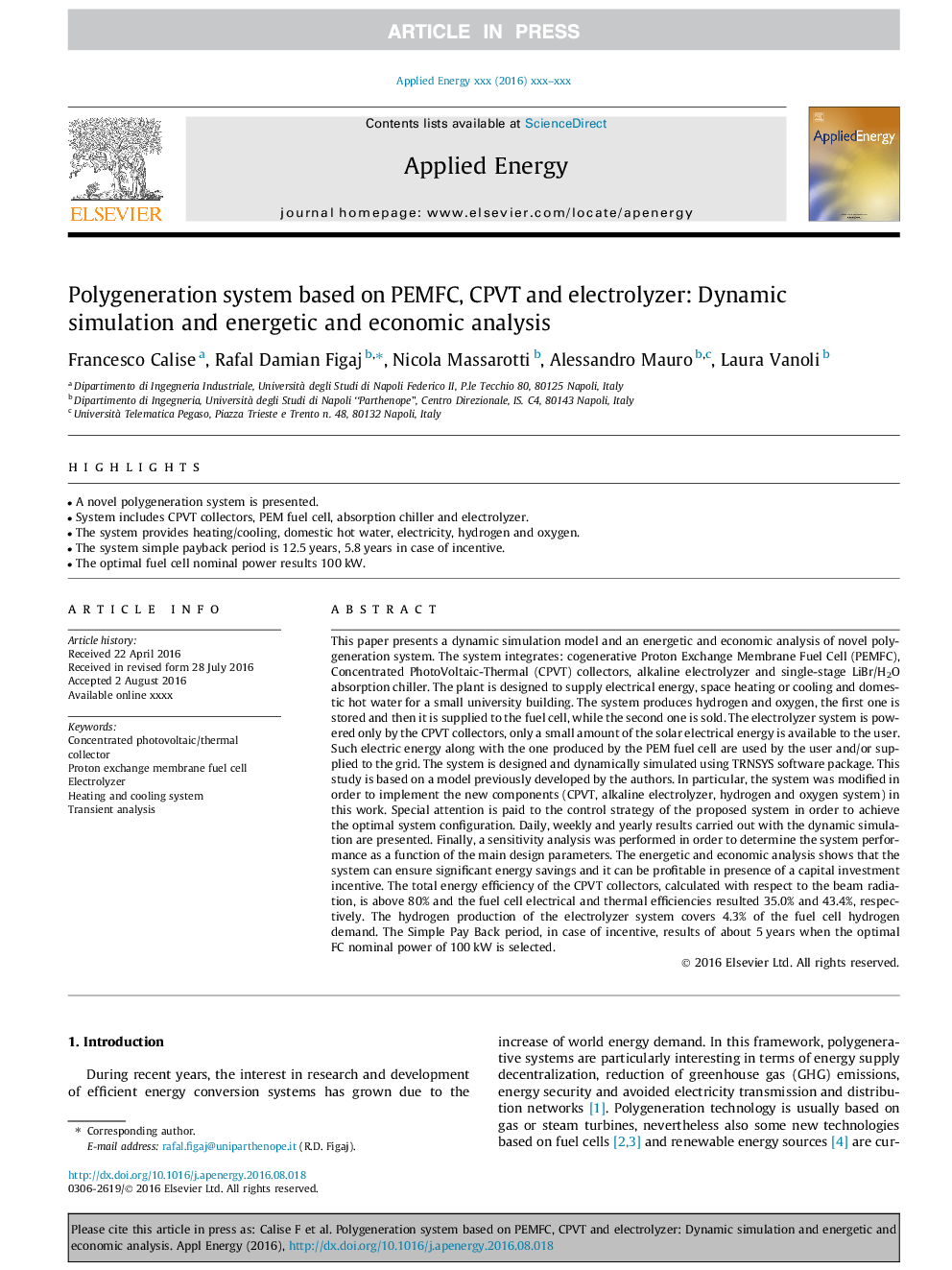| Article ID | Journal | Published Year | Pages | File Type |
|---|---|---|---|---|
| 4916453 | Applied Energy | 2017 | 13 Pages |
Abstract
This paper presents a dynamic simulation model and an energetic and economic analysis of novel polygeneration system. The system integrates: cogenerative Proton Exchange Membrane Fuel Cell (PEMFC), Concentrated PhotoVoltaic-Thermal (CPVT) collectors, alkaline electrolyzer and single-stage LiBr/H2O absorption chiller. The plant is designed to supply electrical energy, space heating or cooling and domestic hot water for a small university building. The system produces hydrogen and oxygen, the first one is stored and then it is supplied to the fuel cell, while the second one is sold. The electrolyzer system is powered only by the CPVT collectors, only a small amount of the solar electrical energy is available to the user. Such electric energy along with the one produced by the PEM fuel cell are used by the user and/or supplied to the grid. The system is designed and dynamically simulated using TRNSYS software package. This study is based on a model previously developed by the authors. In particular, the system was modified in order to implement the new components (CPVT, alkaline electrolyzer, hydrogen and oxygen system) in this work. Special attention is paid to the control strategy of the proposed system in order to achieve the optimal system configuration. Daily, weekly and yearly results carried out with the dynamic simulation are presented. Finally, a sensitivity analysis was performed in order to determine the system performance as a function of the main design parameters. The energetic and economic analysis shows that the system can ensure significant energy savings and it can be profitable in presence of a capital investment incentive. The total energy efficiency of the CPVT collectors, calculated with respect to the beam radiation, is above 80% and the fuel cell electrical and thermal efficiencies resulted 35.0% and 43.4%, respectively. The hydrogen production of the electrolyzer system covers 4.3% of the fuel cell hydrogen demand. The Simple Pay Back period, in case of incentive, results of about 5Â years when the optimal FC nominal power of 100Â kW is selected.
Related Topics
Physical Sciences and Engineering
Energy
Energy Engineering and Power Technology
Authors
Francesco Calise, Rafal Damian Figaj, Nicola Massarotti, Alessandro Mauro, Laura Vanoli,
